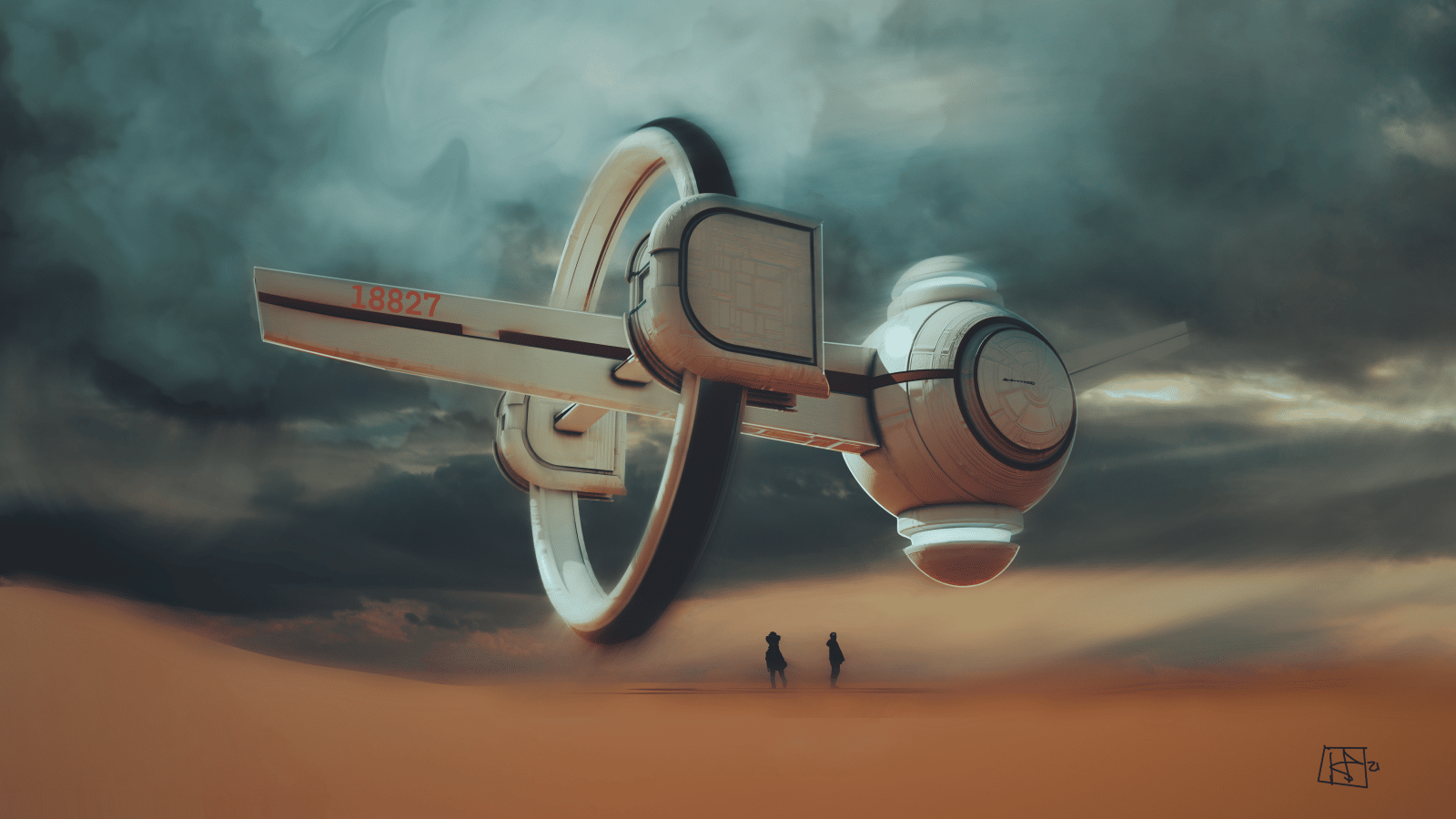The current state of the world — from the devastating impact of Covid-19 to environmental disasters — has created a global urge to escape the present reality. Covid-19 mandates, in particular, have merged our home and work lives, and the shift to remote working has singularly isolated thousands from their colleagues and neighbors. Furthermore, the crisis of clean air, due largely to the transmission of an airborne virus, has fractured the security of daily life. This sudden threat of nature has inspired many to delve into their fantasy lives and, in the case of some NFT artists, erect whole ecosystems to inhabit in their work.
The exhibition “Escapism” ponders the tendency toward digital distraction, particularly as a vehicle to not only conceive of new worlds but also to cope with the current one. The creators use a variety of technologies, like computational photography and AI, and their bodies of work explore styles, like digitized landscapes and dystopian imagery, that characterize the experience of escape as both pleasant and unnerving.
“Escapism” includes the work of creators Bella Whitford, Daniel Ambrosi, Snow Yunxue Fu, Karl Poyzer, Sam Price and Nogland.
BELLA WHITFORD
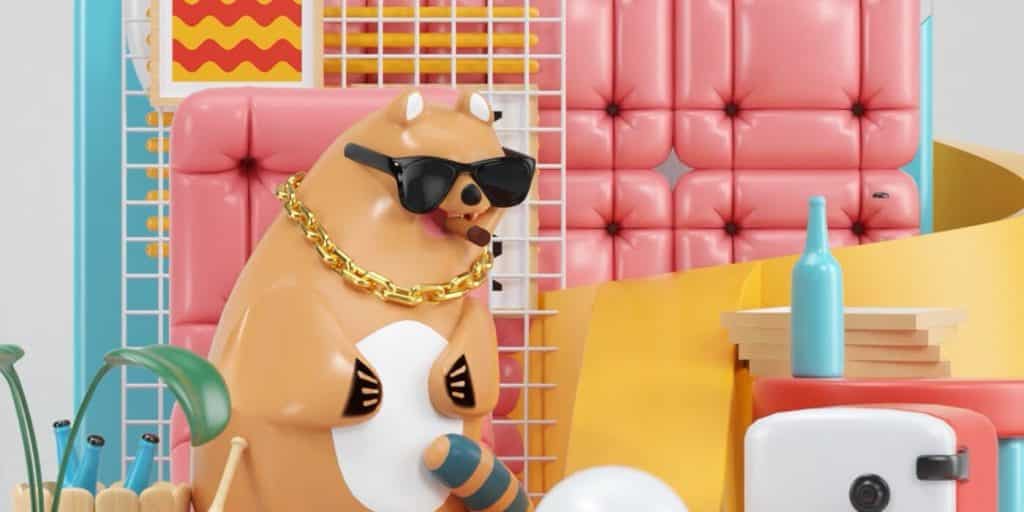
Piano and the Fox, the alias for designer Bella Whitford, produces colorful 3D vignettes of characters enjoying a variety of whimsical activities. The London artist’s recent NFT series similarly portrays figures — characterized as bears, cats and raccoons — who perform popular hobbies during the global Covid-19 quarantine.
The animation Work depicts an auburn-colored raccoon wearing black sunglasses and a gold chain necklace. With a cigar between its teeth, the raccoon sits on a pink couch cushion and watches a striped ball roll down a shoot to its left. As the animation loops, the rolling ball loops as well, symbolizing the repetitive nature of working from home. The raccoon focuses compulsively on the ball as it falls again and again. “For many people, their work is one of the ways that they can escape from their problems in their everyday life,” Whitford writes. To cope with a frightening pandemic, work became a safe space for many people in 2020.
KARL POYZER
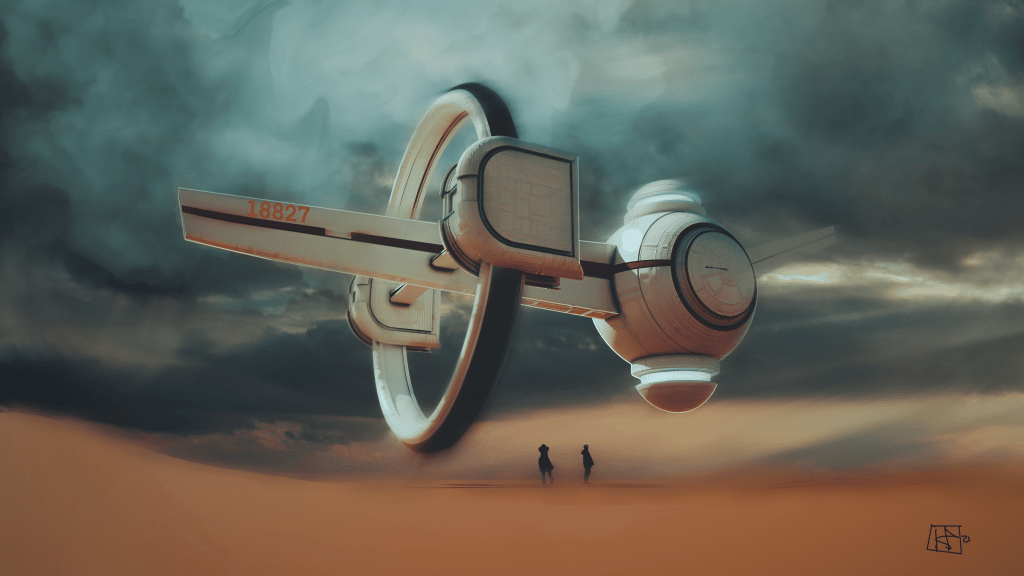
Karl Poyzer, a multimedia artist and illustrator, creates vast dystopian scenes inspired by science fiction and cinematography. His recent NFT series “Memories of Usonia” imagines a dystopian future for intelligent life. In the work titled Journey, for example, a large white aircraft is centered in the foreground and dominates the picture plane. The surrounding atmosphere shows no signs of life beyond two figures standing underneath the flying machine.
The stark contrast between the small black figures and the aircraft suggests that in the quest for escape, machinery, not human life, could be the new reality. In this series, Poyzer challenges the desire for many to escape from current conditions on earth when, comparatively, it could be in a more distressing situation.
“ ‘Memories of Usonia’ is a collection of works that catalogue some of the melancholic sights of a world, all but forgotten by time. Although Usonia’s tidally locked deserts were the first stepping stone in humanity’s journey into the stars, this once bright beacon of hope has become a home for those too poor or too stubborn to leave,” Poyzer writes.
“A planet tidally locked, that is to say, one that does not spin on its own axis, is in an unending staring contest with its star. Only the terminator line, where the light and dark sides meet, are habitable by our frail biologies, and this land of permanent sunset is where we lay our scene,” he continues. “As the rest of humanity stretches its legs into the cosmos, take some time to stare back into its past, as we take a brief tour of Usonia.”
DANIEL AMBROSI
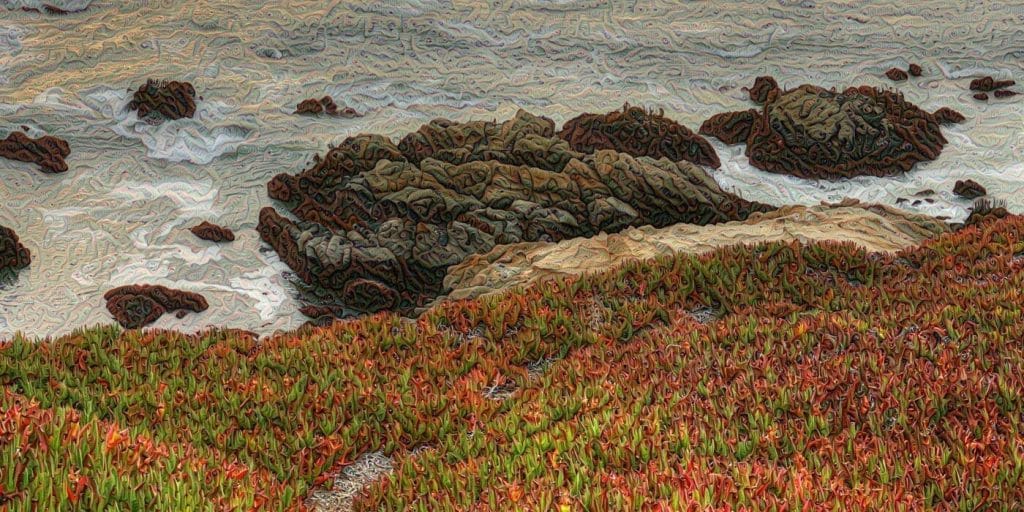
Creator Daniel Ambrosi creates his “Dreamscapes” through a combination of computational photography and artificial intelligence. He captures giant panoramas of idyllic landscapes and cityscapes and then directs his custom AI code to transform these images into fantasy worlds. Inspired by multiple art movements, particularly as historically applied to landscape painting, Ambrosi’s “Dreamscapes” have evolved over the years from Realism to Impressionism to Cubism and beyond.
His motion graphic work Point Montara Lighthouse depicts a small lighthouse by the sea at sunset with several houses clustered behind it. The seashore is lined with boulders, grass and a bed of red flowers. As the animation peers closer into the grass, the flowers transform into textured mosaics through the application of what the artist terms “dreaming effects.” At a glance, the serene landscape becomes a puzzle of organic shapes and forms. Through the illusion of technology, Ambrosi allows the viewer to find a dream-like escape in real-world imagery.
SNOW YUNXUE FU
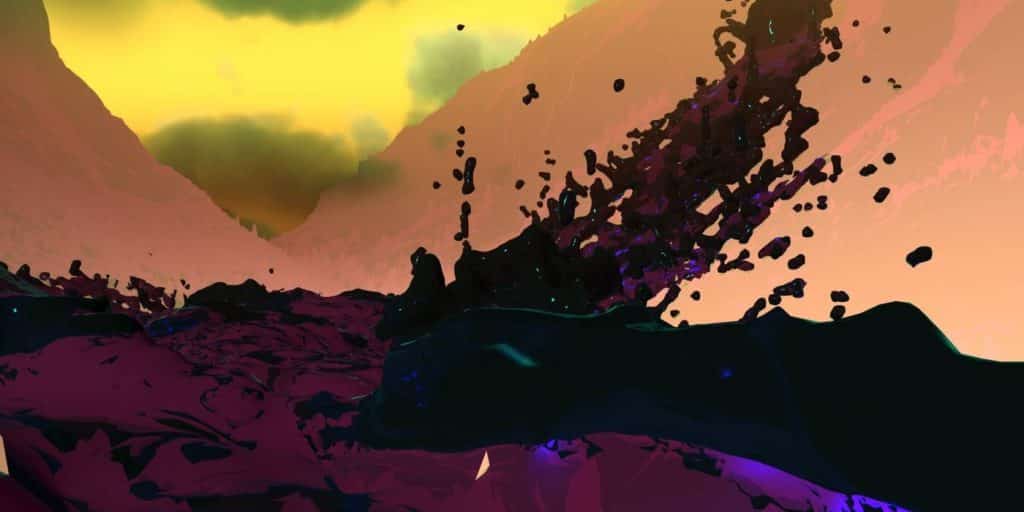
Digital artist and professor Snow Yunxue Fu creates digital landscape paintings with CG technology and virtual photography. Primarily landscapes, the paintings depict clouds, mountains and flowing water in iridescent greens, reds and pinks. The artist takes forms from nature and transforms them into manufactured copies of the natural world. Because the colors can only be generated with a computer, her NFT works, like Clouds Study 3 and Rivers Study 9, for example, represent the potential for multiple natures to exist through digital manipulation, unlike the natural world.
“ ‘Gorges’ is a series of 3D moving image pieces that contemplates contemporary technological society’s relationship with the natural world. While clouds are synonymous with digital culture, rendered rivers and mountains are realistically depicted stationary with highly saturated color directly from the RGB scale,” Fu explains. “The naturalistic compositions tie visually to landscape paintings (both Chinese and Western), play on perception and desire for a relationship with nature; yet it is synthetic, a liminal realm that we experience but cannot touch. ‘Gorges’ offers an experience of the digital sublime, which overlaps with our perception of the physical landscape, digital space, our relationship with each and the fundamental questions that follow, peering into the nature of our existence.”
NOGLAND
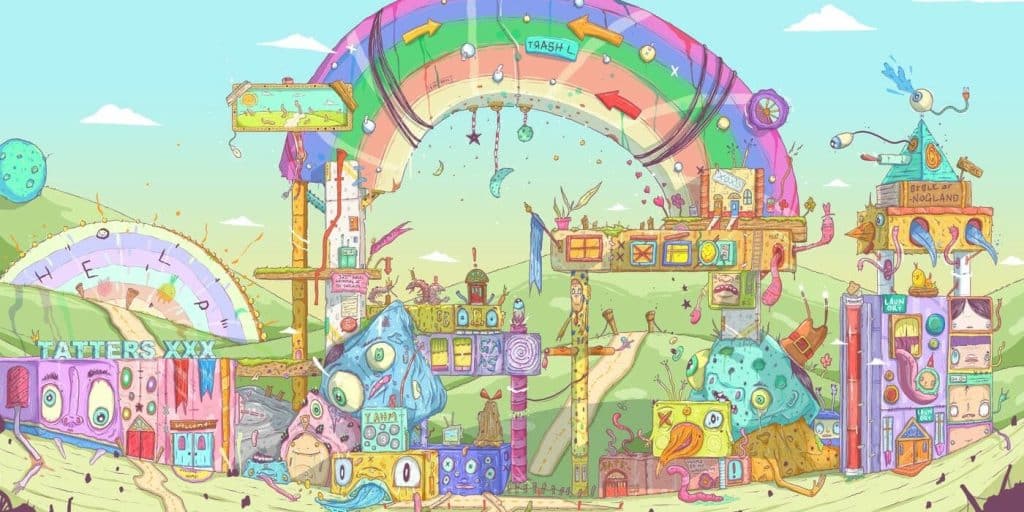
In his whimsical work, Nogland imagines playful scenes that portray the grotesque archaeology of human consumption. Home Sweet Home, one of his recent NFT creations, shows a medley of dilapidated buildings, misshapen figures, storefront signs, electric appliances and debris.
Bright pastel greens, pinks and purples on defaced property and goods indicate that this abandoned scene was once a site of play and prosperity. Words like “HELP” and “Trash L.” splattered with black paint across bold billboards and luxury items like damaged antiques also suggest the negative effects of overindulgence. Nogland illustrates in these colorful yet unsettling scenes of trash, tourist traps and roadside attractions the potential pitfalls of escapism.
SAM PRICE
American artist Sam Price incorporates the study of neuroscience into his work in order to investigate the ability of the human brain to imagine beyond known categories. His abstract motion paintings expose the impulse of categorization that prevents the mind from effectively escaping the known world and indulging in imagination.
The artist writes this about the genesis of and intention behind the NFT series “Garbage In, Garbage Out” as it pertains to the exhibition: “I began this work by surveying participants to search for objects in one of my paintings in order to train a convolutional neural network (CNN) to generate new interpretive images. The resulting visuals inform an integrated sculptural projection.”
“I unintentionally prompted viewers to seek the work’s most legible objects, even if they were sparsely present. Our draw to the most evident patterns in our vision leads us to perceive a world defined by tangibility. By training the CNN to find specific objects like lightbulbs, it sought and rendered lightbulb geometries where no viewer would; consequently, its view of my work became visually defined by this obsession.”
